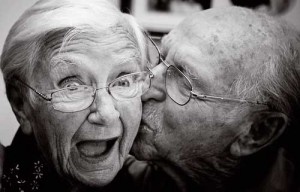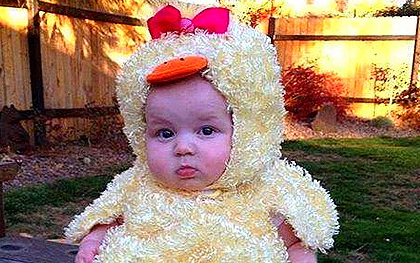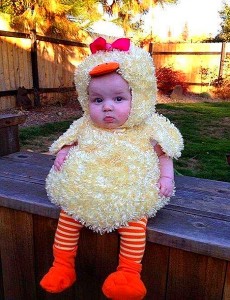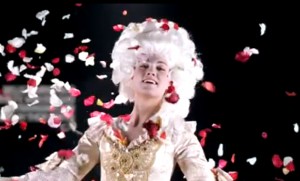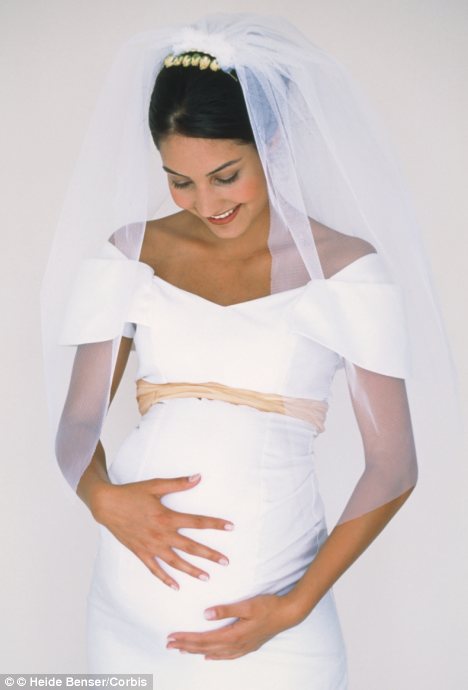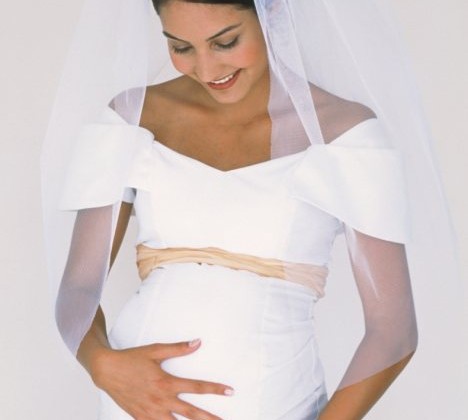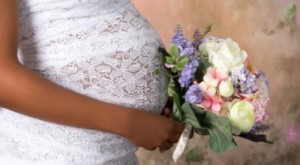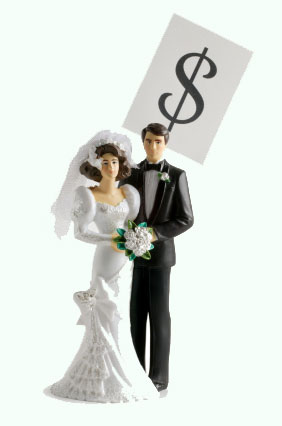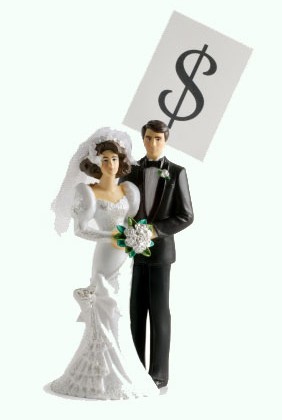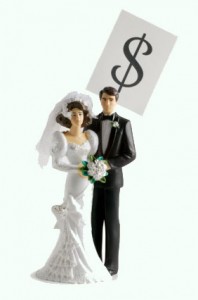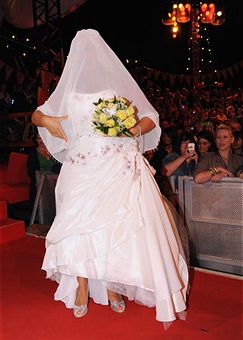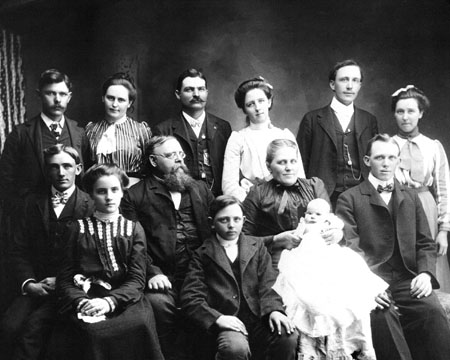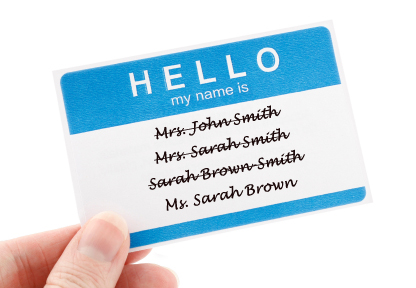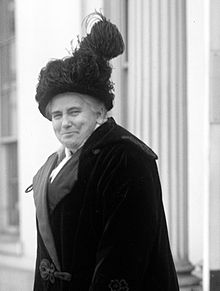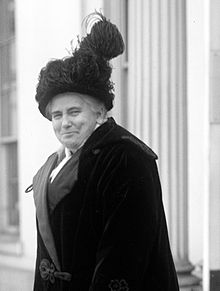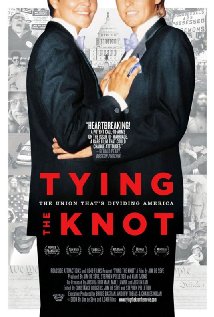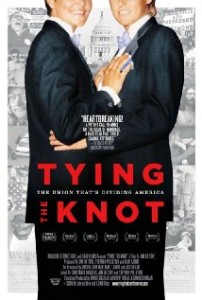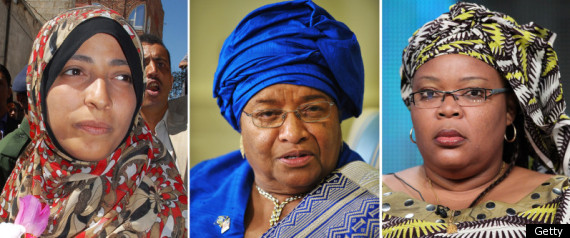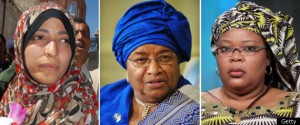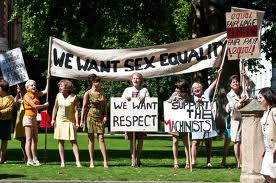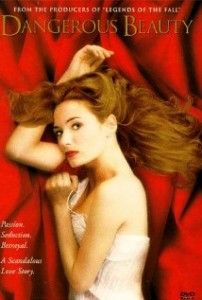History
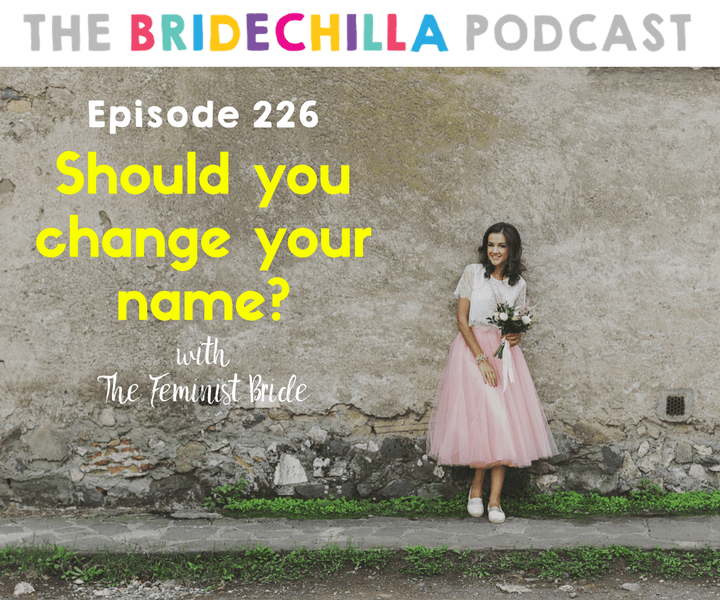
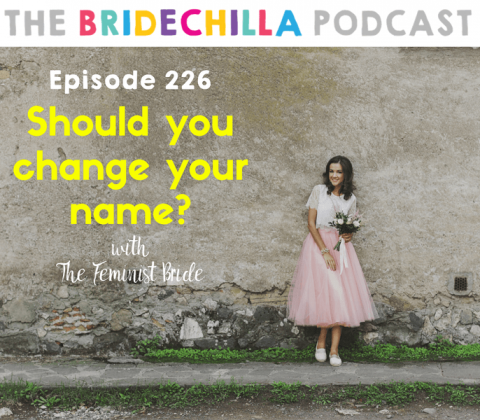
Should You Change Your Name?
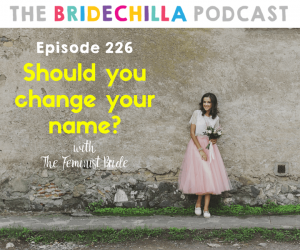 The Feminist Bride returns as a guest on the Bridechilla Podcast to discuss the wedding tradition of name change (Ep #226). Host Aleisha McCormack asks (and I answer) why do women change their name? Should they? What other options are there? How come men don’t? There’s a whole lot to consider than just your personal motivations – seriously, they might shock you. If you’re a feminist bride (or groom) grappling with whether or not this tradition is for you, I highly recommend you give it a listen (which you can do on iTunes, Android or by downloading the bridechilla app!
The Feminist Bride returns as a guest on the Bridechilla Podcast to discuss the wedding tradition of name change (Ep #226). Host Aleisha McCormack asks (and I answer) why do women change their name? Should they? What other options are there? How come men don’t? There’s a whole lot to consider than just your personal motivations – seriously, they might shock you. If you’re a feminist bride (or groom) grappling with whether or not this tradition is for you, I highly recommend you give it a listen (which you can do on iTunes, Android or by downloading the bridechilla app!
And if you missed The Feminist Bride’s first guest spot on the podcast, check out Episode 169, where I discuss the traditions in most need of feminism and the obsolete and sexist symbolism imbedded in them.
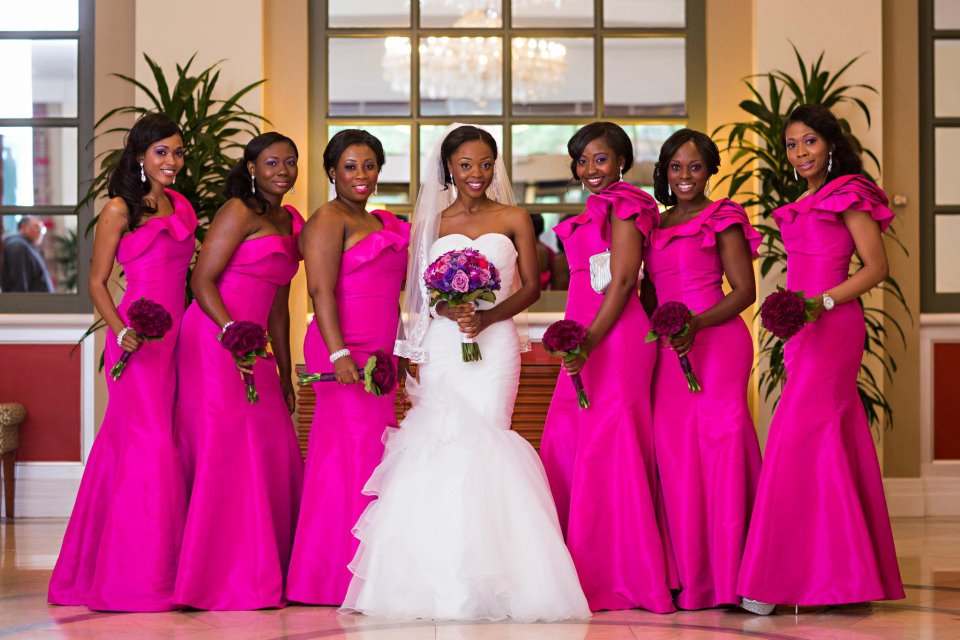
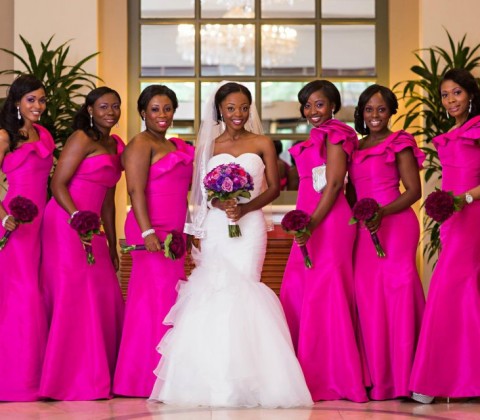
Why Do Bridesmaids (aka Best Ladies) Dress Alike?
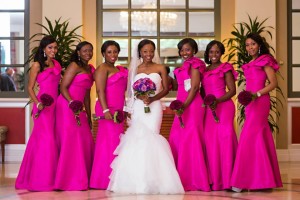 Every wonder why best ladies dress alike? It’s not because the bride has a twin fetish or because ordering someone what to wear is part of some sick and twisted mommy dearest game (though who knows, it could be…). It’s actually not for anal uniformity in photos either or team spirit. And would you believe it wasn’t originally so the bride would stand out among her entourage (though it has sorta become that)?
Every wonder why best ladies dress alike? It’s not because the bride has a twin fetish or because ordering someone what to wear is part of some sick and twisted mommy dearest game (though who knows, it could be…). It’s actually not for anal uniformity in photos either or team spirit. And would you believe it wasn’t originally so the bride would stand out among her entourage (though it has sorta become that)?
The dressing alike tradition goes all the way back to before the middle ages. It was thought that evil demons wanted to curse the bride with their bad juju. So her maids, nearest or dearest would actually dress like the bride in order to fool the mean spirits. This explains why it was kosher for Pippa Middleton to dress in white like her future-queen sister, Kate. And if you think about it, Pippa did indeed thwart any negative attention away from Kate; although in 2011 the evil spirits where more like the paparazzi and anyone with the Internet who thought it was okay to objectify Pippa’s derriere…
Best ladies are not the only ones who originally dressed like the bride; the flower girl mimics her outfit too. Although a flower girl’s goal is not to thwart the evil eye but it’s still equally superstitious. She is supposed to represent the bride’s future children, who would biologically-speaking physically resemble the bride, hence the matching uniform.
The fact that best ladies still dress alike harkens back to these ancient superstitions, though the efforts of the wedding industry and advertising has oppositely influenced the tradition. Now it’s about making the bride stand out, like a white bull’s-eye among a uniform sea of crimson cocktail dresses. This new age emphasis on the bride is what has created bridezillas, so one could argue that the me-me-me bride has indeed become infected by those demons or become one… Maybe there’s something to this dress-alike tradition after all.


Speech! Speech! The History of the Wedding Toast
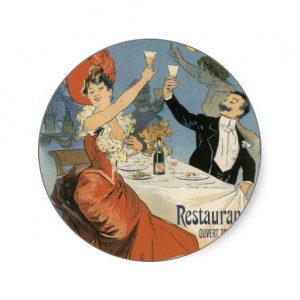 We all love the wedding toast, mostly because it can either go amazingly awesome or terribly wrong. I don’t really have much to offer in the way of feminist words or suggestions, though recognizing both people and not just the bride or groom is important.
We all love the wedding toast, mostly because it can either go amazingly awesome or terribly wrong. I don’t really have much to offer in the way of feminist words or suggestions, though recognizing both people and not just the bride or groom is important.
The history of the wedding toast comes courtesy of my spouse from a speech he gave as a best man once. In ancient times, when people were most likely at war with their neighbors, many would come to a truce by marrying the leaders’ children. At the banquet table, the bride’s father would be the first to drink from a communal wine pitcher to show his guests that it was not poisoned. My spouse, being a good best man promised to all the guests at the wedding his own self-sacrifice by sampling all the beer and liquor behind the bar for their safekeeping. Feel free to borrow this one, it went over well.
And speaking of toast, we call it a toast because wine was not always a tasty libation. To cure the spirit of its rancidness, a burnt piece of toast was placed in the pitcher to absorb some of the acidity. The host would also eat this piece after everyone had drunk from the vessel as a sign of graciousness to his guests.
But here’s a feminist toast – “ To friends and foes, it doesn’t matter who you know, feminists will unite, and always fight the good fight!”
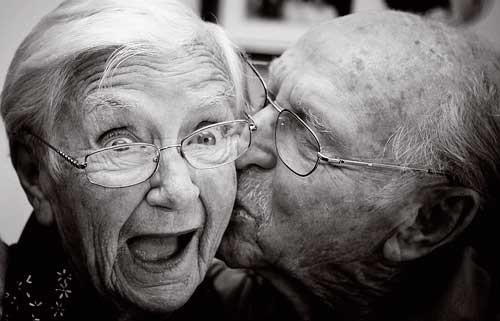

Wedding Anniversary Gifts: Tradition Gets A Makeover
Hey folks, remember that time you got married? I hope so because you’re required to keep on remembering – every year, FOREVER. Not remembering wedding anniversaries can lead to nights on the couch, even more-expensive-than-you’d-normally-buy jewelry or signing up for things you’d normally refuse to do with your spouse like Zumba lessons or using your naked body as a platter for an intimate Sunday football meal.
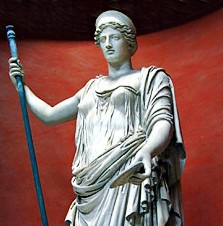

Why You’re Going to So Many June Weddings
Is the start of your summer filled with nothing but weddings? There’s a long history ![]()
![]()
 explaining
explaining ![]()
![]() why so many fall in this month. Most of it stems from ancient Roman times and is tied to nature’s seasonal cycles. With mankind being agrarian for most of human history there are some traditions that are just harder to break, even if we get our food from Whole Foods now. Here’s a list of a few possible explanations.
why so many fall in this month. Most of it stems from ancient Roman times and is tied to nature’s seasonal cycles. With mankind being agrarian for most of human history there are some traditions that are just harder to break, even if we get our food from Whole Foods now. Here’s a list of a few possible explanations.
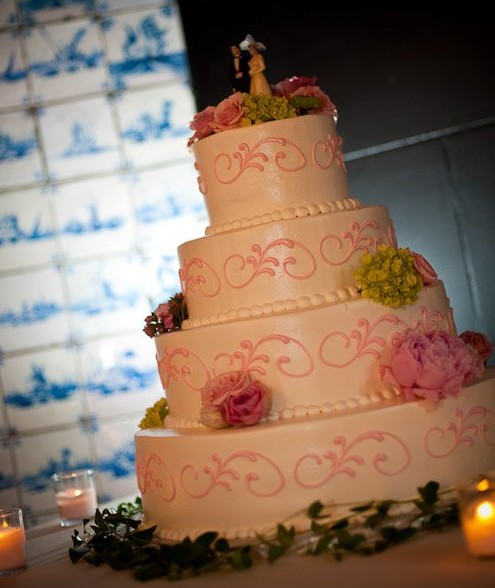
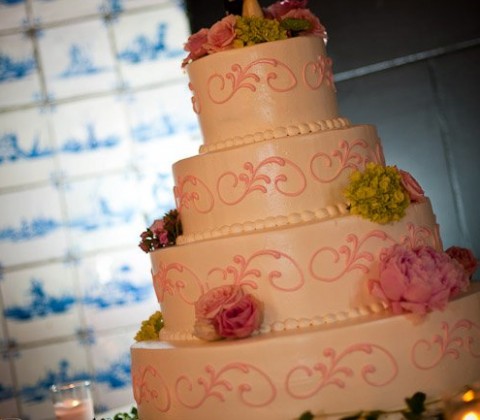
The Origins of the Wedding Cake
Every wonder why wedding cake is a tradition? Here’s a fun lecture I did at Tufts University on The Origins of the Wedding Cake and in my own wedding dress to boot! The origins is just a small part in my full lecture of “The Sexy and Sexist Layers of the Wedding Cake” for the Women’s Center 2nd Annual Symposium.
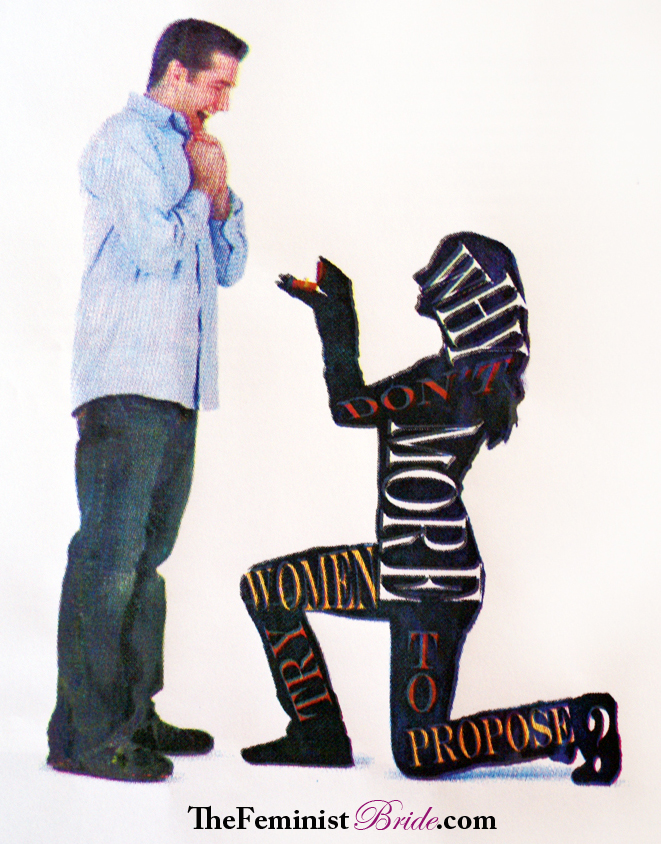

Leap Day: The Only Day Women Can Propose…NOT!
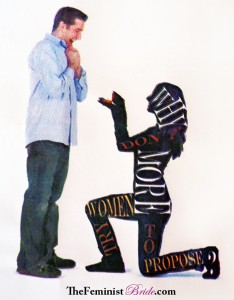 There is a wedding tradition that states women are only allowed to propose to men on February 29th, Leap Day. That’s once for twenty-four hours every four years and that’s if she’s in a relationship that’s ready to move to the next step. Having such an opportunity is almost as rare as Donald Trump telling the truth or acting humble. The question is where does such nonsense come from?
There is a wedding tradition that states women are only allowed to propose to men on February 29th, Leap Day. That’s once for twenty-four hours every four years and that’s if she’s in a relationship that’s ready to move to the next step. Having such an opportunity is almost as rare as Donald Trump telling the truth or acting humble. The question is where does such nonsense come from?

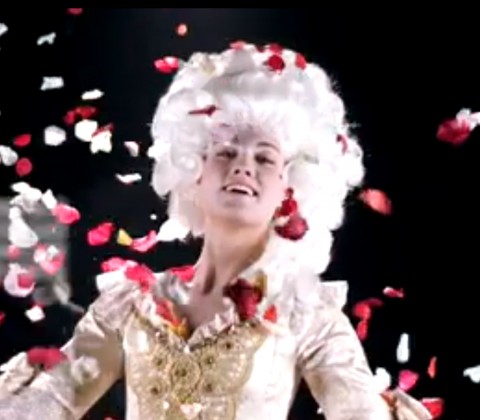
What Historically Accurate Disney Princesses Look Like
Ever wonder what Disney princesses would be like if they were placed in their correct times in human history? This video reverses all the Princesses’ Fairy Godmother’s work and reverts them back to reality. And it turns out it ain’t all songs and furry animal sidekicks, like how Jasmine would have been a lot more covered up due to strict religious mores. The video asks, “Did they live happily ever after?” but doesn’t answer the question directly other than showing the stark reality between the women’s fantasy lives and real life ones. However, I’m reading Stephanie Coontz’s Marriage, A History and it seems unlikely that they lived happily as few women in these periods had any civil and social rights. Until the 19th century few women were allowed to get an education or retain any type of power, except over a household. And forget about their knights in shining armor, these women barely got to choose whom they married and loving them was generally out of the question. Husbands usually controlled their lives and the finances too, even if through a dowry, she was the wealthy one. They could even legally beat their wives, and cheating was generally accepted. Reality gives a glimpse as to why perhaps these princess fantasies were appealing…


The Flaw in Tiffany & Co.’s Same-sex Engagement Ring Ad
Everyone’s favorite breakfast shop and jeweler, Tiffany & Co. has just released a new engagement ring ad, “Will you?” featuring a real life same-sex couple. Like an engagement, there’s plenty of reason to celebrate when a company diversifies its ad campaigns to include more than just white heterosexuals. J. Crew, The Gap, JC Penny and Ray-Ban are just a few of the companies that are starting to cater to the LGBT market. However, before we pop that champagne there’s still plenty to consider.

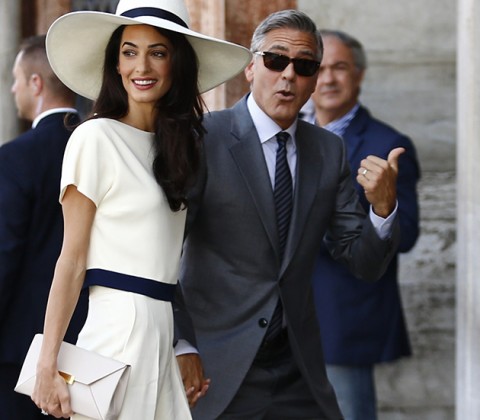
Is Choosing to Take Your Husband’s Surname Really Feminist?
I winced when I heard Ms. Amal Alamuddin was changing her name to Mrs. George Clooney. She became yet another example of a women choosing for her identity to be represented by a man’s after marrying. Here’s how her decision, one shared by the majority of women, is vastly more complicated than it seems.
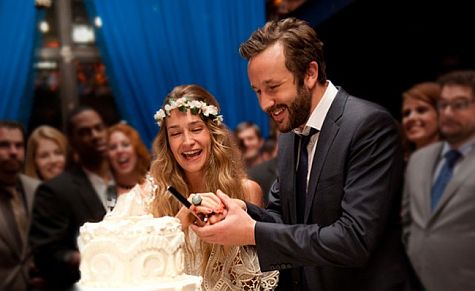

The Modern Equation for Getting Married
Tired of winking at people online? Starting to wonder why you’re friends with some 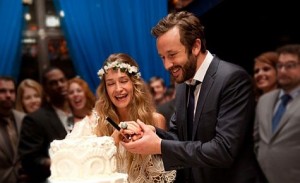 people if their other friends are the duds they keep setting you up with? Finding yourself starring over to the kitchen, wondering what type of hors d’ oeuvres they’ll be serving after the wedding ceremony? Focused on your career, grad school or the number of dates you have lined up? Thinking you can have it all and NOT be married? Or are you just holding out for the perfect one and the perfect conditions?
people if their other friends are the duds they keep setting you up with? Finding yourself starring over to the kitchen, wondering what type of hors d’ oeuvres they’ll be serving after the wedding ceremony? Focused on your career, grad school or the number of dates you have lined up? Thinking you can have it all and NOT be married? Or are you just holding out for the perfect one and the perfect conditions?


Wish Wedding Tradition Never Changed? Think Again
Struggling with planning a wedding? Being a bride today is not nearly as bad as it was 60 years ago! 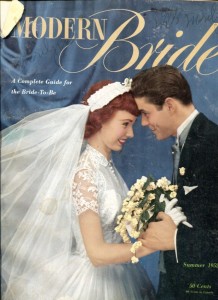 Jezebel offers some sobering and interesting insights into what weddings and wifedom were like back in the 1950s. The article explores Modern Brides‘ advice to young brides like on selecting an intelligent or a not so intelligent mate,
Jezebel offers some sobering and interesting insights into what weddings and wifedom were like back in the 1950s. The article explores Modern Brides‘ advice to young brides like on selecting an intelligent or a not so intelligent mate,
“The average man marries a woman who is slightly less intelligent than he is. That’s why many brilliant women never marry. They do not come in contact with sufficiently brilliant men, or fail to disguise their brilliance in order to win a man of somewhat less intelligence. College males tell us that they want a girl for a wife who is intelligent but makes them feel they are still more intelligent!”
If you find yourself agreeing with this antiquity mindset, you might want to loosen that equally outdated girdle you’re wearing. The next time you hear someone talking about how wedding and marriage tradition should be firmly adhered to and never changed to accommodate modern women and same-sex couples, just send them directly to the article to read more horrific advice. And if you’re still convinced there’s a nugget of good advice in there, here’s this hilariously offensive bit of marital insight:
“Is He an Agreeable Person—Or An ‘Individualist'”? The agreeable person tends to conform to the norms set by society. Particularly this is important in a girl. For example, she favors prohibition and opposes burlesque shows. She finds it easy to accept leadership when it is directed by ethical considerations. Not liking to be ‘different,’ she wants her marriage to meet community standards.“


Where do engagement rings come from?
Thinking about getting an engagement ring? Have you considered whether it’s really worth it? The Feminist Bride has! The stone-cold truth is that the engagement ring and all its connected traditions were invented in a boardroom by folks who wanted to make a profit on your love! Academic College Humor has some very interesting (and might I say very accurate) information on the origins of engagement rings and their real intrinsic value.
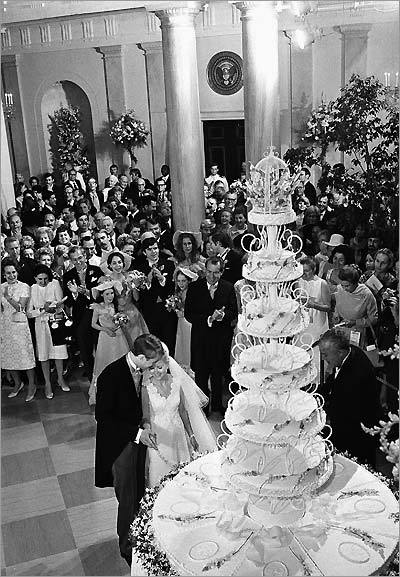

The Wedding Cake: Go Big or Go Home
Victorian’s started the whole big cake, compensating-for-something-else competition.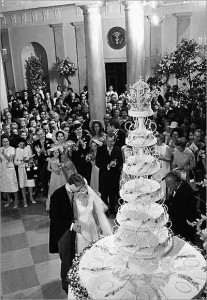 The larger the cake: the greater the wealth and affluence supposedly. Queen Victoria’s cake measured three yards in circumference, Elvis’s had six tiers, and in 1971, Richard Nixon’s daughter had a 350 lb., 7 ft. high White House wedding cake. The world’s largest wedding cake, according to The Guinness World Record Association, weighed 15,032lb on February 8, 2004 and was made by Mohegan Sun Casino, CT chefs. But that doesn’t trump the life-sized cake that a TLC Texas Bridezilla had made in the image herself (just of herself). Does that count as cannibalism?
The larger the cake: the greater the wealth and affluence supposedly. Queen Victoria’s cake measured three yards in circumference, Elvis’s had six tiers, and in 1971, Richard Nixon’s daughter had a 350 lb., 7 ft. high White House wedding cake. The world’s largest wedding cake, according to The Guinness World Record Association, weighed 15,032lb on February 8, 2004 and was made by Mohegan Sun Casino, CT chefs. But that doesn’t trump the life-sized cake that a TLC Texas Bridezilla had made in the image herself (just of herself). Does that count as cannibalism?
One of the best speeches championing for same-sex marriage
An old speech but an amazing one worth reviewing by NYC Senator Diane J. Salvino. I’m going to put  this as one of the top speech’s to protect and support gay marriage. Another great one is by Zach Wahls of Iowa. If you have a few other speech recommendations, send them my way at TheFeministBride@gmail.com. I’d love to put together an inspiring list!
this as one of the top speech’s to protect and support gay marriage. Another great one is by Zach Wahls of Iowa. If you have a few other speech recommendations, send them my way at TheFeministBride@gmail.com. I’d love to put together an inspiring list!
We should hail Senator Diane J. Salvino not just for being one of the few 19% of women that form the United States Congress, but for her amazing speech supporting gay marriage to the New York Senate when New York was still grappling with the idea of letting gays marry. Her speech in 2009 was poignant and inspirational, but most of all it was about time someone spoke rationally, reasonably and fairly on the subject. The speech is available on YouTube, but here is a portion of the transcript.
“I was on 6th avenue in Manhattan, I was in my car, I was driving, make a left turn onto 52nd street, I was stopped at a light, I had my window open. And a young man on a pedicab stopped and stuck his head in the window of my car, which I thought was kind of strange. But he recognized the senate license plate on my car and this was right during the week that the assembly was taking up the vote earlier this year. And he said to me, ‘Excuse me, is there going to be a gay marriage vote in Albany this week’? And I said ‘Yes, the assembly’s going to take it up, but the senate probably won’t take it up any time soon, I’m not sure when.’ And he said, ‘Are you going to vote for it?’ And I said, ‘Yes I am.’ And he said, ‘Why?’ And I said, ‘Because I believe that people should be able to share their life with whomever they want and the role of government is to administer that contract that they agree to enter into.’ And he stopped and said, ‘But they’re changing the definition of marriage.’ And I said, ‘Don’t get so excited about this marriage stuff.’ I said, ‘Think about this, we just met, you and I right here at the stoplight. You stuck your head in the window of my car. Do you know tomorrow we could go to City Hall, we could apply for a marriage license, and we could get married, and nobody there will ask us about the quality of our relationship or whether we’ve been committed to each other or any of those things. They will issue that marriage license and we can get married.’ And he said, ‘Yes, that’s true.’ I said, ‘Do you think we’re ready for that kind of commitment’? And he stopped and he said, ‘I see your point.’ And that’s really what this is about. We in government don’t determine the quality or the validity of peoples’ relationships. If we did we would not issue three-quarters of the marriage licenses we do. And I know there are many people in the religious community who feel that we’re going to force this on them when in fact that is not true, we have never done that. I’m a Roman Catholic. The Catholic church has the right to deny me the sacrament of marriage if they determine the person I choose to marry is unfit or our relationship doesn’t meet their standards. City Hall does not have that right. That will not change under this bill. That will never change. Religious institutions can continue to practice discrimination with respect to the sacrament of marriage. We don’t. We shouldn’t. We should not do it for gay and lesbian couples.”
Despite her impassioned speech, lawmakers still denied the bill to give gay couples equal marriage rights. However, in 2011 the New York government came around and finally passed a Marriage Equality Bill. Speeches like hers may not make changes over night, but they certainly can plant important idea-seeds that will grow in flourish in the future.
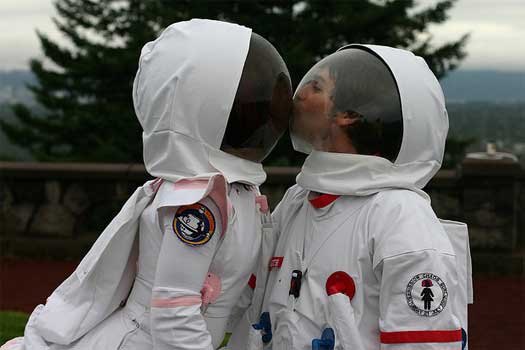

The Future of Marriage
In honor of the Supreme Court ruling today defending the legality and support of same-sex marriage, 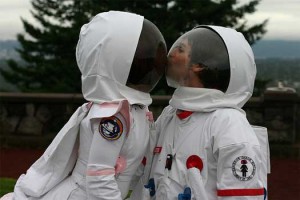 I thought offering insight into the future of marriage would be a salient point. I’m thrilled that many same-sex couples in states that recognize gay marriage can now enjoy the same state and federal benefits hetero-couples do, and I hope that many of those in states behind the curve can start planning their own legal nuptials soon too. However, while today was a huge milestone there is still lots more to accomplish…for all sexual orientations. Everyone should keep marriage equality as their number one wish on their wedding registry.
I thought offering insight into the future of marriage would be a salient point. I’m thrilled that many same-sex couples in states that recognize gay marriage can now enjoy the same state and federal benefits hetero-couples do, and I hope that many of those in states behind the curve can start planning their own legal nuptials soon too. However, while today was a huge milestone there is still lots more to accomplish…for all sexual orientations. Everyone should keep marriage equality as their number one wish on their wedding registry.
In the meantime, I predict more scandalous celebrity marriages and divorces that will push the limits of conventional marriages (I’m looking at you Kardashians). Now with California, I foresee one highly publicized gay celebrity marriage sponsored by US Weekly that will help mitigate the fears of same-sex marriage, but also (unfortunately) perpetuate gay stereotypes. I envision a line of new wedding products designed by those briefly married celebrities. I foreshadow more diversity in the couples TLC wedding shows exploit. Rom-coms will continue to define its female lead’s value by the relationship she gets by the end of the movie. After all of this, I hope Hollywood will be a little more conscientious about how it treats marriage and those within it.
There are more positive things to predict though. I predict, like interracial marriage, gay marriage will be commonplace in the next twenty years and our children (born inside or outside of marriage) will read about this civil rights movement in their history books. In the near future, I anticipate people will come to better understand that mass cultural institutions cannot take precedence over a person’s private rights as protected under the fourteenth amendment. I also hope same-sex marriage naysayers learn that a strict exclusive definition to marriage dilutes its power and meaning, it is stronger when it is all encompassing and embracing. Love does not discriminate and as its formal frame, neither should marriage. I believe gay marriage will help eradicate sexist gender roles in wedding traditions and marriage and we will be better off for it. I predict every person, regardless of their race, age, gender and sexual orientation will eventually access the same rights, the same benefits and the same protection, not because they fell in love with someone, but because we’ve come to respect and love humanity above the private privileges marriage retains for itself. But most of all, I hope the terms same-sex or gay marriage disappear and we can just recognize those forms of marriage as what they truly are, just marriage.
I predict the next big issue when it comes to marriage will be among the permanent, lifestyle singles. With 95% of people trying marriage at least once in a lifetime, the next minority to feel excluded from the special provisions provided by marriage will be singles, and single families. This means that fixing the cracks and dents in our existing family law will be the next reform issue. And it’s a major one. We seldom realize that our existing family law discriminates against almost everyone, regardless of his or her race, sexual orientation, marital status and age. (Sorry, plural marriage participators I just don’t think the US is ready to pull your number for reform next.) I foreshadow that in the effort to eradicate singlism, the next great debate will not be what is marriage, but what constitutes family.
I’m struck by all the happy and celebratory posts on Facebook in light of today’s Supreme Court ruling, particularly by those who do not benefit directly from today’s historic ruling. Their elation shows true altruism. For everyone celebrating though, it proves that marriage is purely enjoyed when everyone can partake in it. And for my final predictions, I foresee a still long walk to the aisle for same-sex couples, but today it got a little shorter; I envision happier and just slightly brighter smiles at weddings, and I expect to get invited to many more weddings now.
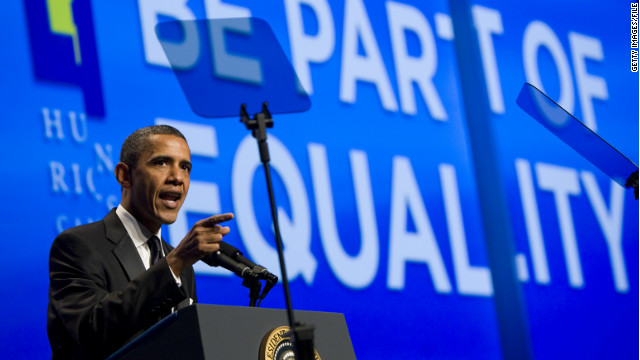

Obama Endorses Same-sex Marriage
In a historical change of mind, President Obama has come forward to proclaim that 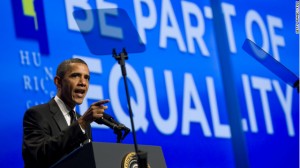 he supports same-sex marriage. Prior to this announcement, he limited his belief system to civil unions based on his own religion’s edict that marriage was only for men and women. Regardless of his new personal beliefs he still believes the legality of same-sex marriage should be dictated on the state level. I could find no information as to whether this would prompt him to change the federal policy which still doesn’t recognize legal same-sex marriages from the seven states that allow it.
he supports same-sex marriage. Prior to this announcement, he limited his belief system to civil unions based on his own religion’s edict that marriage was only for men and women. Regardless of his new personal beliefs he still believes the legality of same-sex marriage should be dictated on the state level. I could find no information as to whether this would prompt him to change the federal policy which still doesn’t recognize legal same-sex marriages from the seven states that allow it.
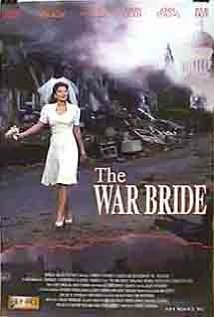

FB Movie Review: The War Bride
![]() The War Bride(2001) – Set during World War II, Lily marries a Canadian soldier.
The War Bride(2001) – Set during World War II, Lily marries a Canadian soldier. 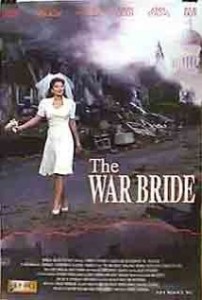 She quickly becomes pregnant and moves to Canada to live with her in-laws as part of a save the war-brides campaign. A sassy, fashionable city-Londoner, she finds herself in the plains of central Canada on a farm, severely out of her element and amongst hostile in-laws who find her UK style foreign, too sexual and think her marriage was a ploy to get her out of war-torn Europe. Not knowing whether her spouse is alive, she struggles with being a wife and a mother in a foreign land. (Subject: Marriage, War, Women) Director: Lyndon Chubbuck
She quickly becomes pregnant and moves to Canada to live with her in-laws as part of a save the war-brides campaign. A sassy, fashionable city-Londoner, she finds herself in the plains of central Canada on a farm, severely out of her element and amongst hostile in-laws who find her UK style foreign, too sexual and think her marriage was a ploy to get her out of war-torn Europe. Not knowing whether her spouse is alive, she struggles with being a wife and a mother in a foreign land. (Subject: Marriage, War, Women) Director: Lyndon Chubbuck
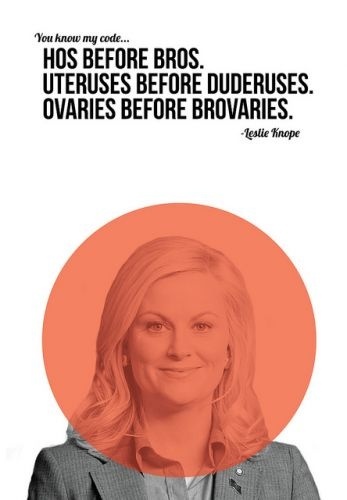

2 Must-See Video Parodies of the Birth Control Congressional Hearing Session
Funny videos of the birth control Congressional hearing debacle. Thought it would be worth a share, a chuckle and a tisk-tisk over the whole birth control debate issue.
SNL’s Amy Pohler and Seth Meyer in “REALLY?!”
Stephen Colbert’s Catholics and Birth Control


Happy President’s Day to All The Past Female Presidents! Oh Wait, There Are None.
Between Republican Presidential Candidate’s Newt Gingrich’s delightful views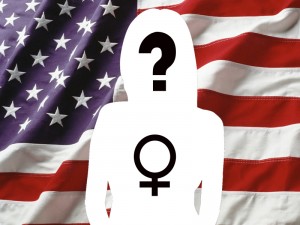 and treatment of women, people attacking Obama on his legislation protecting women’s reproductive rights, the Susan G Komen vs. Planned Parenthood debacle, Sarah Palin, Michelle Bachmann and now the blatant exclusive male debate over women’s birth control, I get a really warm, fuzzy and inviting feeling when it comes to women’s place in politics.
and treatment of women, people attacking Obama on his legislation protecting women’s reproductive rights, the Susan G Komen vs. Planned Parenthood debacle, Sarah Palin, Michelle Bachmann and now the blatant exclusive male debate over women’s birth control, I get a really warm, fuzzy and inviting feeling when it comes to women’s place in politics.
So when I see the countless people celebrating this President’s Day weekend, I’m only compelled to celebrate the Monday I’ve been given off. There’s little cause for me to celebrate. Out of 44 presidents (and 55 available terms), not one has been a woman. A few have come (sorta) close though. In 1872, Victoria Woodhull was the first woman to run for president. Back then women did not even have the right to vote in federal elections yet and wouldn’t until 1920 – 52 years later. The female candidates between now and then have been few and far in between with no successful ones. A 2009 poll revealed only 55 percent think America is now ready for a woman president. Despite Americans seeing themselves as a world leader, we actually rank 90th in the number of women in our national legislature. And given the US’s history of world politics we’d be embarrassed to realize what other countries are ahead of us such as Cuba (ranked 6th) and Afghanistan (30th). The figures are no more encouraging for other political positions. Overall, for dominating 51% of the total US population, women only account for 17% of the seats in Congress. And our numbers are declining. At this rate women will not reach parity for 500 years!
I’m happy to think that a lot of this birth control debate and the blatant misogyny we see occurring in our reproductive fate is encouraging women to speak up after too much silence. I haven’t seen such overwhelming support for women since the 1990s. The personal may be political, but in the public realm most of us have been keeping the personal private and that is clearly dangerous. We’ve naively assumed that the personal will be protected. Without our direct involvement in our own fate we can’t assume the progress of women will continue. Below is a list of where women in positions of political leadership currently stand. The statistics are scary.
On this President’s weekend, I encourage women to think about their own involvement in the political process. Are you voting for candidates that believe in women, that will fight for ALL women and include women on their own offices? What is your own involvement in politics – instead of being disgruntled at the our current state of affairs, why aren’t you throwing your hat into the ring? Many of us grew up in a generation that taught women can be anything they put their minds too, yet few of us have followed up on that idea. We should recognize we hold all the same skill sets, will and strength to run and hold positions of leadership as any other candidate. Why aren’t we more involved then?
Sorry to copy straight from the pages of the WCF Foundation, but I found the statistics so compelling, eye opening and straight forward that it just seemed better to give them a tip of the hat on their work and a little plug for their non-profit (Click here to donate to their “She Should Run” Campaign). Here is their mission statement: “WCF is dedicated to helping women build the skills and infrastructure they need to become more effective leaders in public life. WCF Foundation conducts action-oriented research and pilots targeted programs that prepare women to become more politically active, increase their engagement in key democratic processes, and ready them for public leadership roles. At WCF Foundation, we not only identify barriers to women’s political equality – we find solutions.” I would also like to point out The White House Project that encourages women’s leadership in all sectors. Their mantra of “Add Women, Change Everything,” speaks exactly to the power of including women.
FAST FACTS ABOUT WOMEN IN POLITICS
Where We Are: 2010 Election Update
For the first time since 1987, the United States made no progress in electing more women to Congress.
- Democrats lost control of the House of Representatives, bringing an end to Represenative Nancy Pelosi’s historic leadership role as the first woman Speaker of the House. (Source)
- 3 women committee chairs—Rep. Louise Slaughter on the Rules Committee, Rep. Nydia Velazquez on the Small Business Committee, and Rep. Zoe Lofgren on the Standards of Official Conduct Committee—will also lose their leadership positions as the Democrats become the minority party in the House. (Source)
- The number of women serving in the Senate will remain level at 17. The number of women serving in the House of Representatives will drop for the first time since 1979. (Source)
- 10 incumbent Democratic Congresswomen lost their seats. No Republican women in the House lost their seats. One incumbent woman Senator lost her seat. (Source)
A few pieces of good news in an otherwise dreary election cycle for women:
- Hawaii elected women to both of its U.S. House seats, making it the first state with more than one congressional district to have all-female representation in the House of Representatives. (Source)
- Five women of color were elected to the House of Representatives, including WCF-Endorsed Terri Sewell, who will become Alabama’s first African-American Congresswoman. (Source)
Women are still under-represented at all levels of government.
- Women hold only 17% of the seats in Congress. (Source)
- Only 22% of all statewide elective executive office positions are currently held by women. (Source)
- State Legislatures are only 24% women. (Source)
- Only 6 out of 50 states have a female governor. (Source)
- The United States trails behind much of the world—ranking 90th in the number of women in our national legislature. (*Note: The U.S. is listed as 73rd, but after accounting for tied rankings of other countries, the ranking for the U.S. is 90th. Source)
- On average, male cabinet appointees outnumber women cabinet appointees in our states by a ratio of 2 to 1. (Source)
- 50% less women than men consider of running for office. Of those, 30% less actually run, with only a fraction seeking higher office. (Lawless, Jennifer and Richard L Fox. It Takes a Candidate: Why Women Don’t Run for Office. New York: Cambridge UP, 2005.)
- Women constituted 54% of voters in the 2008 elections, but only 24% of state legislators. (Source)
- Women of color represent only 4% of Congress and 23% of women Members of Congress. (Source)
Facts on women of color in elective office
- Of the 89 women serving in the 112th US Congress, 24 or 27% are women of color. (Source)
- From those, 13 are African American, 7 are Latina, 4 are Asian American and none in Native American.(Source)
- Of the 68 women serving in statewide elective executive offices 10, or 14.7% are women of color. (Source)
- Women of color constitute 4.7% of the 7,382 state legislators. (Source)
Why We’re Here
Parties can make or break a woman candidate:
- About one-third of women say that someone tried to discourage them from running—most often an officeholder or political party official. (Source)
- Women are more likely than men to say that party support was very important to their decision to run. Women are also more likely to cite their party, rather than an organization, as the most influential source of encouragement for their candidacies. (Source)
Gender Stereotypes still play a role:
- Both male and female voters are much more judgmental about the appearance and style of a female candidate than of a male candidate. Although all candidates are judged on these attributes to some degree, women have a more difficult challenge in convincing voters to judge them on their merits rather than on their appearance.(Source)
- If a woman candidate is unmarried, both male and female voters perceive her as less likely to share their own family values. (Source)
Money Counts:
- The top three women who enjoyed incumbency advantage in 2008 raised approximately $33 million—$16 million less than the total for the top three male incumbents. (Source)
- In highly competitive races, the gap between the top-raising female and male U.S. Senate challengers in 2008 was almost $14 million (Senator Kay Hagan raised $8.5 million and Al Franken $22.5 million), which is $8 million more than the difference in 2006. (Source)
- Male U.S. House incumbents raised on average $196,281 more than women in 2008. Only five of the 1303 candidates relied on women for more than half their contributions. (Source)
- Most women believe that it is harder for female candidates to raise money than male candidates, while the overwhelming majority of men believe it is equally hard for both men and women. (Source)


Washington House Passes Gay Marriage Bill
Washington state passed legislature to legalize gay marriage today! Washington is slated to  become the seventh state to support marriage equality.
become the seventh state to support marriage equality.
It follows New York, Connecticut, Iowa, Massachusetts, New Hampshire, Vermont and Washington D.C. New Jersey lawmakers should be voting on the measure next week and Maine might revisit it again in November. However in the same month as Maine, Minnesota might ban gay marriage, along with North Carolina in May.
Washington fought for equal civil rights for the LGBT community for over 30 years without success, except the last 4-5 years. Washington passed a domestic partnership law in 2007, after it has passed its own Defense of Marriage Act.
The house passed the bill 55-43. It should be signed into law next week and will be active in 90 days. However, if opponents gather enough signatures these plans will be put on hold as law requires the issues to go to the ballot box in November. The Huffington Post reported that 55 percent would support upholding the law.
Democratic Rep. Jamie Pedersen, a gay lawmaker from Seattle referred to Tuesday’s ruling by the San Francisco-based 9th U.S. Circuit Court of Appeals that found Prop 8 unconstitutional, “The court addressed the question of why marriage matters directly,” he said, and read a section from the ruling that stated “marriage is the name that society gives to the relationship that matters most between two adults.”
To read more about the news: Washington House Passes Gay Marriage Bill.
Other related Feminist Bride gay marriage articles:
Washington State Revisits Gay Marriage Equality Law
A Testimonial on the Families Gay Marriage Builds
Diane Savino On NY Gay Marriage Bill: ‘We Have Nothing To Fear From Love And Commitment’ (VIDEO)
Chilean President Proposes Rights for Unmarried Partners, Still Opposes Gay Marriage though
Petition Asks Bert And Ernie To Get Married On Sesame Street
Michele Bachmann Gets “Flippy-Floppy” on Addressing Gay Rights Debate
Military gay couples still won’t enjoy benefits
Hold the Happy 39th ‘Roe vs. Wade’, Political Anti-Abortion Talk Rampant
As an artist, I’m usually caught in a conversation with patrons over the stories related to specific pieces of work. A few years ago, I found myself talking to a 50 or so year-old woman about my photo of Havana, Cuba. Both having traveled there we positively swapped stories of the people, the climate and the culture. Any American in Havana is rare these days, I was lucky enough to travel down there legally in 2002 on an academic visa while studying abroad (Fidel even spoke to us at an assembly and then he threw a party for us at a compound). So I was curious why this other American was there.
“Oh,” she nonchalantly replied, “I was there in the 60s to get an abortion.”
Having spent all but five minutes with this woman, I was taken aback by her candidness. I didn’t press the story much further, but it told me 1. at the time abortion was illegal in the US and 2. her presence in Cuba was probably even more illegal. So dire her need for an abortion, she sought the help from one of our countries most notorious enemies because the service was legal there and because it would be performed safely by a surgeon (they do have excellent healthcare there). Making abortion illegal creates a lot of unsafe procedures that put women’s lives at risk. And I have to admit I had no clue about home-abortion kits until I watched Revolutionary Road with Kate Winslet. Hollywood drama aside, no health class or any other source had bothered to inform me as to what life was like before Roe vs. Wade. (Read Mother Jones 2004 “The Way It Was” by Eleanor Cooney for a really good account of pre-Roe).To get an idea on current global statistics when abortions are illegal, “Nearly half of all abortions worldwide are unsafe, and nearly all unsafe abortions occur in developing countries. In the developing world, 56% of all abortions are unsafe, compared with 6% in the developed world,” [Guttmacher Institure].
Roe vs. Wade just celebrated its 39th birthday but it’s still under contention. As the 2012 presidential elections come closer, the politicians’ stances on topics such as abortion come into the spotlight. GOP candidate Rick Santorum opposes abortion in the strictest sense, even in cases of rape and incest. He claims his stance is not religious based, but in a recent interview with CNN’s Piers Morgan he eventually mentioned the big “G.” He argued a woman should, ” ‘accept this horribly created’ baby, because it was still a gift from God, even if given in a “broken” way.” Santorum was also part of the “Partial Birth Abortion Ban bill” passed by Bush #2 in 2003. Characterized as almost zealous in his anti-abortion lobbying and protection of human life, he somehow finds it reasonable to support the death penalty in absolute cases of guilt. Seems his belief in the value of life is conditional. He is just one of the hour GOP candidates that believe Roe vs. Wade should be reversed. Even Michelle Bachmann is claiming that abortion will be made illegal after the 2012 elections.
While it is not hard to understand how religion has influenced these politicians’ abortion views, the Guttmacher Institute release worldwide abortion statistics that suggests that making abortion illegal actually increases the rate of abortions. If the GOP candidates using reasonable 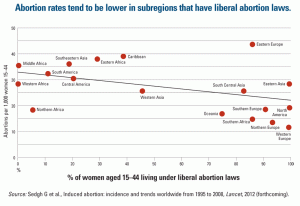 deduction skills, fulfilling their goal of making abortion illegal would not solve their problem at all. In fact, between 1995 and 2008 abortion rates have lowered in developed nations, which can be explained by better access to sex education, general education and access to healthcare. And countries with more liberal laws on abortion actually have lower abortion rates.
deduction skills, fulfilling their goal of making abortion illegal would not solve their problem at all. In fact, between 1995 and 2008 abortion rates have lowered in developed nations, which can be explained by better access to sex education, general education and access to healthcare. And countries with more liberal laws on abortion actually have lower abortion rates.
Obama had this to opposing view to share, “As we mark the 39th anniversary of Roe v. Wade, we must remember that this Supreme Court decision not only protects a woman’s health and reproductive freedom, but also affirms a broader principle: that government should not intrude on private family matters. I remain committed to protecting a woman’s right to choose and this fundamental constitutional right.” Santorum accused Obama of being “radical and extreme” when it came to women’s reproductive births.
I remember an interview with Sarah Palin around the 2008 elections talking about how she was so happy that Bristol chose to keep her baby and made the right decision in her book. The reporter nailed Ms. Palin, anti-abortion supporter, on her choice of words, i.e. “chose.” The irony of the comment was not surprisingly lost on Palin, which goes to show that no matter what your view is, it’s the right to choose that makes a difference. It’s not a really happy birthday for Roe vs. Wade if people are at great odds almost 40 years later on the morality of the issue. We have yet to understand that personal beliefs should not dictate public direction. My personal choice when it comes to my body is my own, but I should have the right to have access to any possible options and not have someone predetermine what they think is the right course for me. Only I can decide that.
Rick Santorum On Opposition To Abortion In Cases Of Rape: ‘Make The Best Out Of A Bad Situation’.
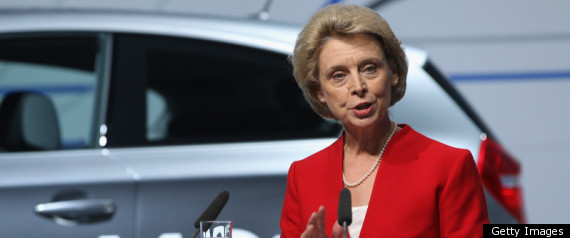

Washington State Revisits Gay Marriage Equality Law
Washington state’s governor, Chris Gregoire, is taking steps to reintroduce a gay marriage  equality bill before Washington’s legislature in early January.
equality bill before Washington’s legislature in early January.
Gregoire, 64, is in the last year of her second term. She has not always supported gay marriage equality, though now she states, “For all couples, a state marriage license is very important. It gives them the right to enter into a marriage contract in which their legal interests, and those of their children if any, are protected by well-established civil law,”
Gay couples already enjoy the same rights as heterosexual ones under a Washington government domestic partnership law which stays within parameters of federal law. While this is still a step up from states that provide no rights 0r protection to gay couples, it practices the notion of “separate but equal.”
Support for gay marriage is split in the state between more the more liberal coast (including Seattle) versus a more conservative inland. While Washington is mostly democratic, gay marriage is still a split issue as a result of conservative democrats. The domestic partnership law was barely approved the first time. In terms of revisiting gay marriage rights, Gregoire commented, “It is time, it’s the right thing to do.”
Critics of the proposal say that Gregoire should be focusing more on the state’s $1.5 billion budget shortfall. However, what no one has managed to consider is how much gay marriage approval would contribute to Washington’s wedding industry revenue.
More than 40 U.S. states have outlawed same-sex marriages, while six states explicitly allow it: New York, Massachusetts, Connecticut, Vermont, New Hampshire and Iowa. Gay marriage is also legal in the District of Columbia.
To help support gay marriage legislation in Washington State check out the group Washington United for Marriage
Other Related Feminist Bride Articles:
Hillary Clinton United Nations Speech: ‘Free and Equal in Dignity and Rights’
A Testimonial on the Families Gay Marriage Builds
Diane Savino On NY Gay Marriage Bill: ‘We Have Nothing To Fear From Love And Commitment’ (VIDEO)
Chilean President Proposes Rights for Unmarried Partners, Still Opposes Gay Marriage though
Petition Asks Bert And Ernie To Get Married On Sesame Street
Michele Bachmann Gets “Flippy-Floppy” on Addressing Gay Rights Debate
Military gay couples still won’t enjoy benefits
NJ Has A New Situation for Gay Marriage Rights
Maryland’s Gov. Martin O’Malley Pushes for Gay-Marriage
To read more from the Chicago Tribune: Washington governor supports gay marriage law


Hillary Clinton United Nations Speech: ‘Free and Equal in Dignity and Rights’
An amazingly powerful speech that should be shared and heeded. Hillary Clinton speaks to the United Nations about how LGBT rights are human rights. Clinton explained that LGBT legitimacy does not differ from the civil rights issues that other groups experienced throughout history. She stresses that to make sure LGBT members are not discriminated or abused we all need to recognize the need to accept and protect – that they should be as free as the rest of us to live in peace, expression and lifestyle without condition.
“It proclaims a simple, powerful idea: All human beings are born free and equal in dignity and rights. And with the declaration, it was made clear that rights are not conferred by government; they are the birthright of all people. It does not matter what country we live in, who our leaders are, or even who we are. Because we are human, we therefore have rights. And because we have rights, governments are bound to protect them.”
“I am talking about gay, lesbian, bisexual, and transgender people, human beings born free and given bestowed equality and dignity, who have a right to claim that, which is now one of the remaining human rights challenges of our time. I speak about this subject knowing that my own country’s record on human rights for gay people is far from perfect. Until 2003, it was still a crime in parts of our country. Many LGBT Americans have endured violence and harassment in their own lives, and for some, including many young people, bullying and exclusion are daily experiences. So we, like all nations, have more work to do to protect human rights at home.”
“It is violation of human rights when people are beaten or killed because of their sexual orientation, or because they do not conform to cultural norms about how men and women should look or behave. It is a violation of human rights when governments declare it illegal to be gay, or allow those who harm gay people to go unpunished. It is a violation of human rights when lesbian or transgendered women are subjected to so-called corrective rape, or forcibly subjected to hormone treatments, or when people are murdered after public calls for violence toward gays, or when they are forced to flee their nations and seek asylum in other lands to save their lives. And it is a violation of human rights when life-saving care is withheld from people because they are gay, or equal access to justice is denied to people because they are gay, or public spaces are out of bounds to people because they are gay. No matter what we look like, where we come from, or who we are, we are all equally entitled to our human rights and dignity.”
Click to here to read full transcript.
More Feminist Bride articles related to gay rights:
A Testimonial on the Families Gay Marriages Builds
Diane Savino On NY Gay Marriage Bill: ‘We Have Nothing To Fear From Love And Commitment’ (VIDEO)
Petition Asks Bert And Ernie To Get Married On Sesame Street
Michele Bachmann Gets “Flippy-Floppy” on Addressing Gay Rights Debate
Military gay couples still won’t enjoy benefits
NJ Has A New Situation for Gay Marriage Rights
Woman’s Pro-Gay Shirt Deemed Offensive at Dollywood, Dolly Parton’s Theme Park
Miley Cyrus Inks Wrong Symbol In Support Of Gay Marriage
Maryland’s Gov. Martin O’Malley Pushes for Gay-Marriage
Hair’ Celebrates Same-Sex Marriage With On-Stage Weddings
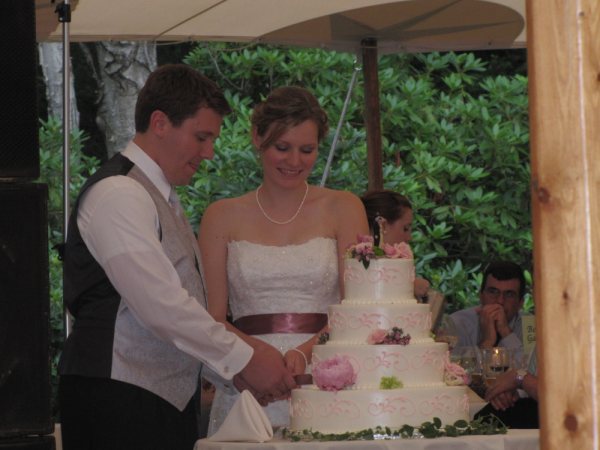

Full Lecture: The Sexy and Sexist Layers of the Wedding Cake
Katrina Majkut, founder of TheFeministBride.com, speaking on “The Sexy and Sexist Layers of the Wedding Cake”
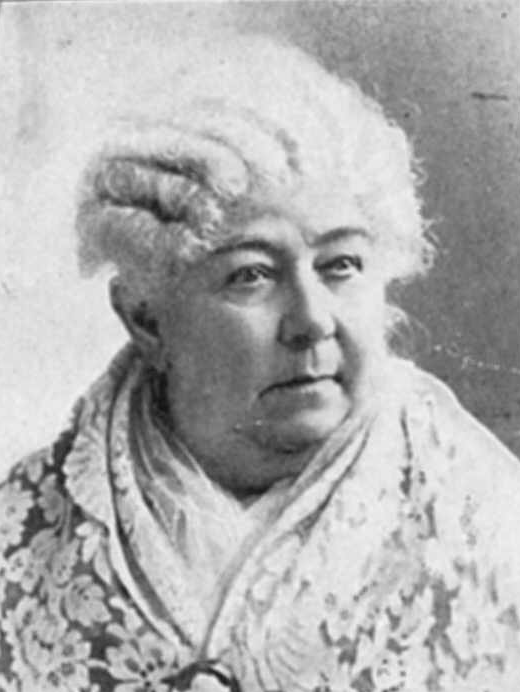

Happy 200th Birthday Elizabeth Cady Stanton!
Happy Birthday Elizabeth Cady Stanton. You are 200 years young! Born on 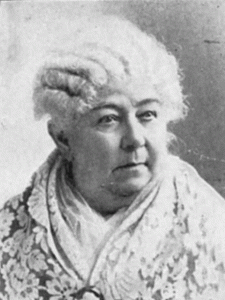 November 12, 1815, you were the mother of the suffragist movement and a pioneer for all women’s rights. You’re great but I have to wonder what you spent all your birthday wishes on cuz we’re still fighting for some of the same damn things you were!
November 12, 1815, you were the mother of the suffragist movement and a pioneer for all women’s rights. You’re great but I have to wonder what you spent all your birthday wishes on cuz we’re still fighting for some of the same damn things you were!
Diane Savino On NY Gay Marriage Bill: ‘We Have Nothing To Fear From Love And Commitment’ (VIDEO)
In Honor of Women’s Equality Day & The 19th Amendment
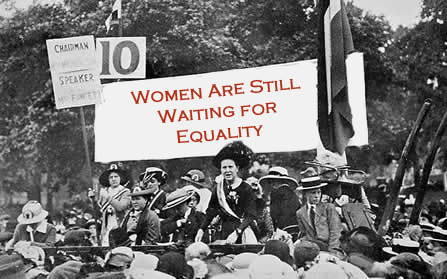

Happy Women’s Equality Day 2013: Don’t Pop The Champagne Just Yet, There’s More Work to Do
On August 18th, women celebrated the ratification of the 19th amendment in 1920 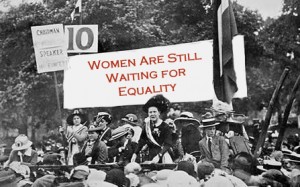 stating that is is unlawful for any United States citizen to be denied the right to vote based on sex. Women have been enjoying the right to vote for 91 years. And today, women are celebrating Women’s Equality Day, which honors not only the 1920 amendment, but also “calls attention to women’s continuing efforts toward full equality.” But don’t pop that champagne just yet, we haven’t accomplished full equality yet.
stating that is is unlawful for any United States citizen to be denied the right to vote based on sex. Women have been enjoying the right to vote for 91 years. And today, women are celebrating Women’s Equality Day, which honors not only the 1920 amendment, but also “calls attention to women’s continuing efforts toward full equality.” But don’t pop that champagne just yet, we haven’t accomplished full equality yet.
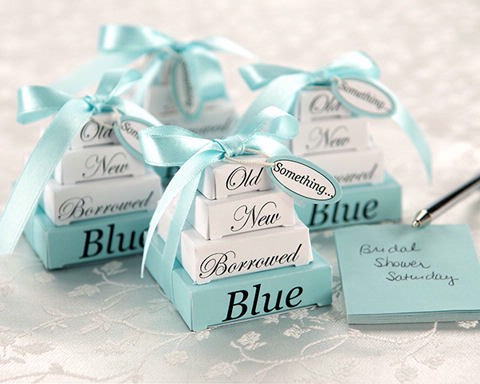

Meaning of “Something Old, Something New, Something Borrowed, Something Blue”
“Something old, something new,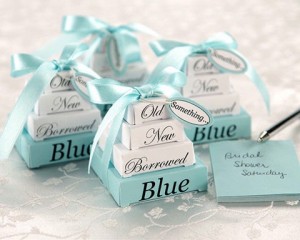
Something borrowed, something blue,
And a silver sixpence in her shoe.”
Ever wonder what this rhythmic superstition meant? While no bride should ever feel the need to be superstitious on her big day, these bridal superstitions where there to add a little extra karma to the special day. Bottom line is though, feminist brides don’t need superstition to ward off bad juju or collect extra luck; you’ve thought long and hard and just know in the pit of your stomach you’re making the right choice to marry and who you marry. Nonetheless here’s the background on this little ditty.
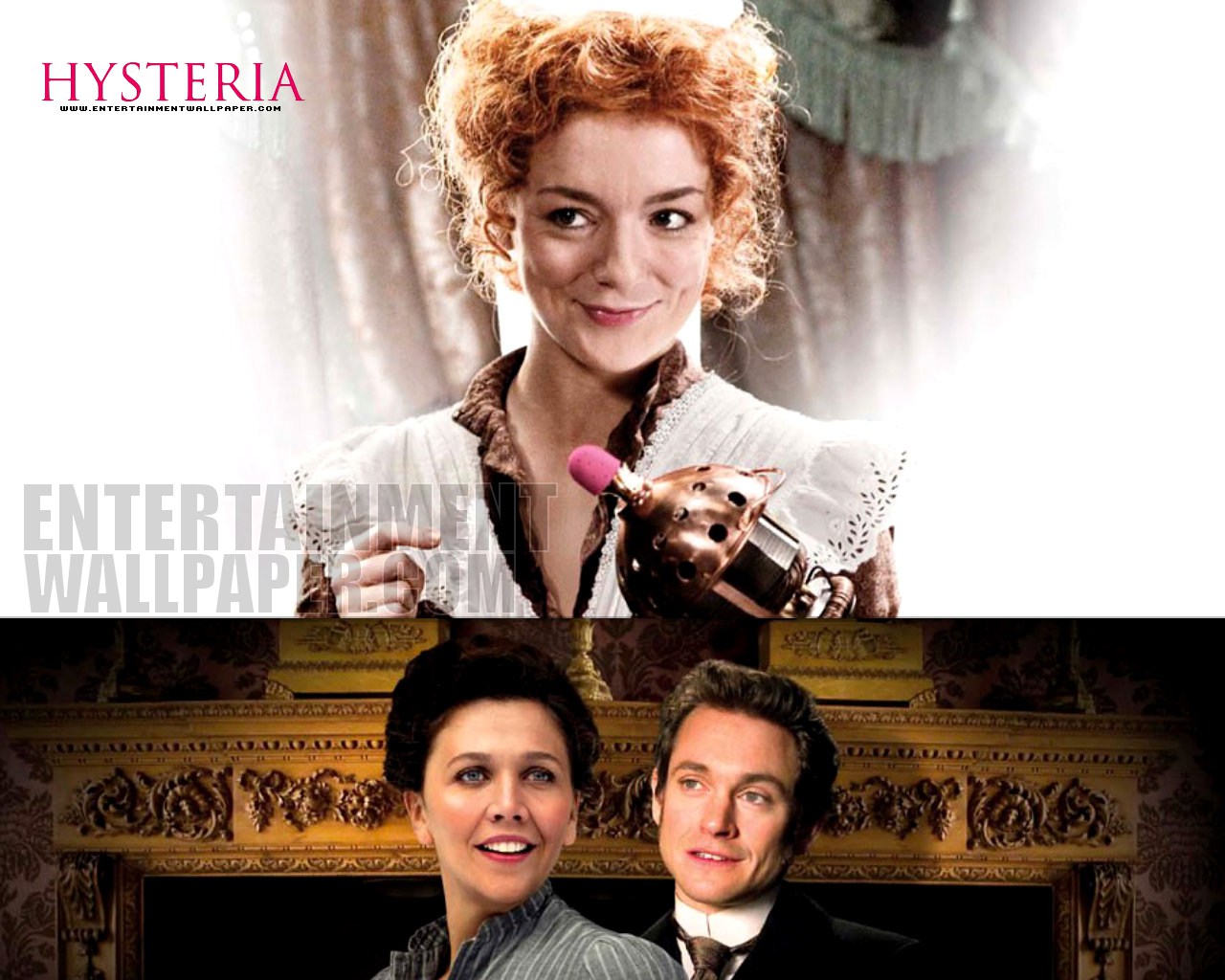
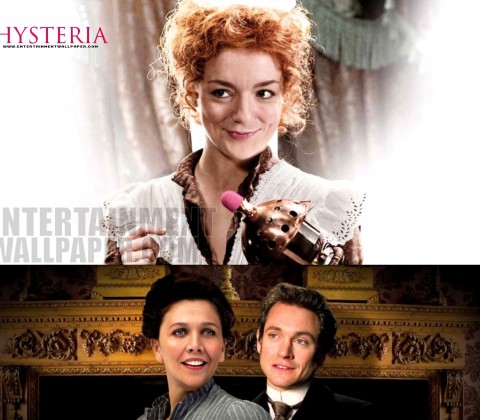
Time to Get Hysterical over New Women’s Movie, “Hysteria”
Ah, I can’t wait to see this! And I can’t wait to write all about it, stay tuned.
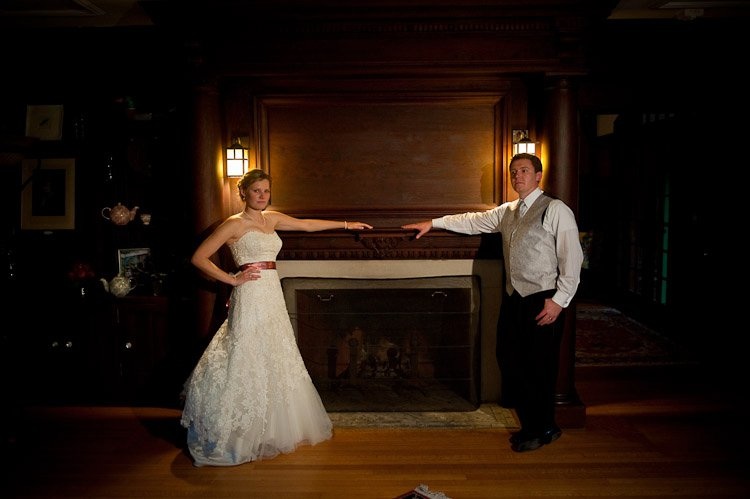

Why Women Change Their Last Names After Marriage
As The Feminist Bride this topic is the most distressing to me. After researching all wedding 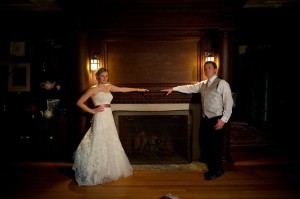 traditions there are three that earn the top obsolete, sexist and promoting inequality – engagement rings, bridal showers and name change. Now, women are starting to understand that third-wave feminism is about choice, but I have to say that when it comes to name change it isn’t an educated one.
traditions there are three that earn the top obsolete, sexist and promoting inequality – engagement rings, bridal showers and name change. Now, women are starting to understand that third-wave feminism is about choice, but I have to say that when it comes to name change it isn’t an educated one.
There are three reasons why the tradition of women adopting their spouses names exists.
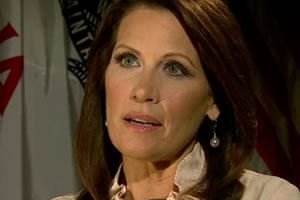

Michele Bachmann Gets “Flippy-Floppy” on Addressing Gay Rights Debate
Apparently Michele Bachmann, who is attending an anti-gay marriage  campaign with National Organization for Marriage (NOM) and is reported to be running Christian counseling centers run with her husband Marcus Bachmann where people practice so-called “pray away the gay” therapy, gets all tight-lipped with less conservative news sources about gay marriage. To them, she describes the issue as “frivolous,” but to eager ears on her side, she’s willing to speak her mind. Seems Ms. Bachmann is only willing to speak with those who will agree with her, sounds like great conflict resolution and diplomatic skills for a potential future leader. She’s also pretty quick to quote constitutional amendments and her belief for freedom, but in her book those freedoms don’t seem to apply to everybody. Seems not everyone is invited to her tea partay.
campaign with National Organization for Marriage (NOM) and is reported to be running Christian counseling centers run with her husband Marcus Bachmann where people practice so-called “pray away the gay” therapy, gets all tight-lipped with less conservative news sources about gay marriage. To them, she describes the issue as “frivolous,” but to eager ears on her side, she’s willing to speak her mind. Seems Ms. Bachmann is only willing to speak with those who will agree with her, sounds like great conflict resolution and diplomatic skills for a potential future leader. She’s also pretty quick to quote constitutional amendments and her belief for freedom, but in her book those freedoms don’t seem to apply to everybody. Seems not everyone is invited to her tea partay.
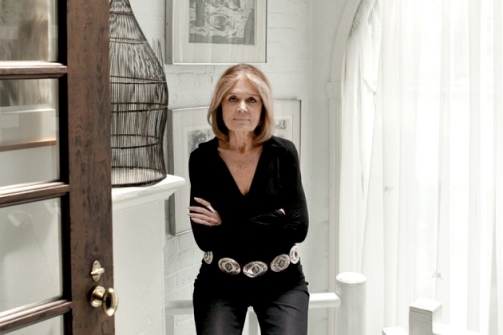

Gloria Steinem: The Future Fight for Women’s Rights
Whether or not you’re a feminist, you should know the name “Gloria Steinem.”  Even if you are a woman and think you don’t agree with feminist politics, your respect is still needed. Feminists, like Steinem, fought for the rights for you have to disagree with them. That thanks, however, is often never said.
Even if you are a woman and think you don’t agree with feminist politics, your respect is still needed. Feminists, like Steinem, fought for the rights for you have to disagree with them. That thanks, however, is often never said.
HBO is airing a documentary on the Ms. magazine founder, Gloria Steinem: In Her Own Words, that explores her early years to her ones as the face of feminism. It airs August 15th.
Maryland’s Gov. Martin O’Malley Pushes for Same-Sex Marriage
(CNSNews.com) – Maryland Gov. Martin O’Malley (D), a Catholic, said he supports gay marriage and added that the
 recent bill passed in New York showed that the government could redefine marriage while still protecting religious liberty. Governor Martin O’Malley and Lt. Governor Anthony G. Brown decided to sponsor same sex marriage legislation in the 2012 legislative session.
recent bill passed in New York showed that the government could redefine marriage while still protecting religious liberty. Governor Martin O’Malley and Lt. Governor Anthony G. Brown decided to sponsor same sex marriage legislation in the 2012 legislative session.

